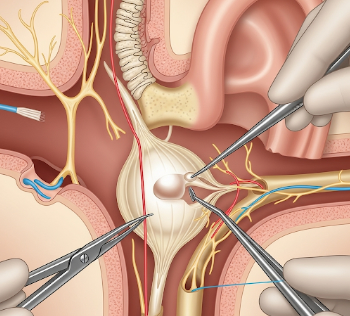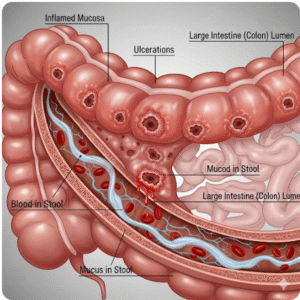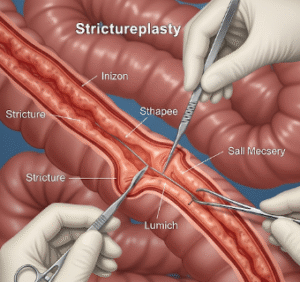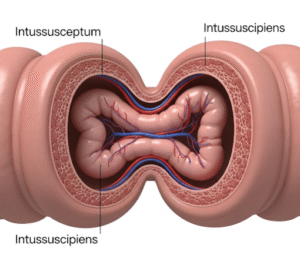Overview
Cholesteatoma surgery is a surgical procedure aimed at removing a cholesteatoma, an abnormal skin growth in the middle ear or mastoid that can erode bones, damage hearing, and lead to infections.
In South Korea, this surgery is performed using advanced microscopic and endoscopic techniques, ensuring precision, minimal complications, and faster recovery. Korean ENT surgeons are recognized for their expertise in complex ear surgeries, preserving hearing, and reconstructing middle ear structures.
What is Cholesteatoma Surgery?
A cholesteatoma is a cyst-like growth of keratinizing epithelium in the middle ear or mastoid, which can expand and destroy surrounding bone structures, including the ossicles and the ear canal.
Types of cholesteatoma surgery include:
- Mastoidectomy: Removal of the cholesteatoma through the mastoid bone.
- Tympanoplasty: Reconstruction of the eardrum and middle ear structures after removal.
- Endoscopic ear surgery: Minimally invasive approach using a small endoscope through the ear canal.
- Canal wall up or canal wall down procedures: Choice depends on disease extent and anatomy.
Surgery is often recommended to prevent recurrent infections, hearing loss, and serious complications like meningitis or brain abscess.
What are the Benefits?
Cholesteatoma surgery provides numerous health and functional benefits:
✔ Complete removal of the cholesteatoma and prevention of recurrence.
✔ Restoration or preservation of hearing function.
✔ Prevention of serious complications including facial nerve injury, intracranial infections, and chronic ear discharge.
✔ Minimally invasive techniques reduce recovery time and postoperative discomfort.
✔ High success rates in South Korea due to advanced ENT surgical expertise.
Procedure Details
1) How should I prepare for Cholesteatoma Surgery?
- Comprehensive evaluation: Audiometry, CT scan of the temporal bone, and ENT examination.
- Medication review: Adjust blood thinners or other medications as instructed.
- Fasting: Usually required for general anesthesia.
- Preoperative counseling: Discuss surgical approach, expected outcomes, and hearing restoration options.
- Arrange post-operative support for initial recovery and follow-up care.
Korean ENT centers provide preoperative imaging, endoscopic evaluation, and patient counseling to ensure precise surgical planning.
2) What happens during the procedure Cholesteatoma Surgery?
- Surgery is performed under general anesthesia.
- The surgeon removes the cholesteatoma using microscopic or endoscopic guidance.
- In mastoidectomy, the mastoid bone is partially removed to access the growth.
- Tympanoplasty may be performed to reconstruct the eardrum and ossicles, restoring hearing.
- Incisions are closed, and a tympanostomy tube may be placed if needed.
- Surgery duration typically ranges from 1–3 hours, depending on the extent of disease.
South Korean surgeons often use high-definition microscopes and endoscopes for maximal preservation of normal structures.
3) What happens after a Cholesteatoma Surgery?
- Patients are monitored in the hospital for 1–2 days.
- Pain and discomfort are managed with medication.
- Ear packing or dressings may be placed and removed after several days.
- Follow-up audiometry and imaging may be conducted to ensure complete removal.
- Most patients return to normal activities within 1–2 weeks, with full recovery and hearing improvement over several weeks.
Korean hospitals provide structured post-operative follow-up and hearing rehabilitation programs.
Risks / Benefits
Potential Risks:
- ➤ Infection at the surgical site
- ➤ Bleeding
- ➤ Hearing loss (temporary or rarely permanent)
- ➤ Dizziness or imbalance
- ➤ Facial nerve injury (rare)
- ➤ Recurrence of cholesteatoma
Major Benefits:
- ✔ Effective removal of cholesteatoma and prevention of recurrence
- ✔ Preservation or restoration of hearing
- ✔ Prevention of severe complications, including intracranial infections
- ✔ Minimally invasive surgery with faster recovery
- ✔ High success rates in Korean ENT surgical centers
Recovery and Outlook
- Immediate post-op: Pain management, ear protection, and monitoring for dizziness or nausea.
- First week: Avoid water entering the ear, heavy lifting, or sudden head movements.
- 2–4 weeks: Gradual resumption of daily activities; hearing rehabilitation may continue.
- Long-term outlook: With proper follow-up, recurrence rates are low, and most patients regain hearing and ear function.
Korean ENT centers provide long-term monitoring, repeat imaging, and audiometry to ensure optimal outcomes.
When To Call the Doctor
Contact your ENT specialist if you experience:
- ➤ Severe or worsening ear pain
- ➤ Fever or signs of infection
- ➤ Persistent dizziness, imbalance, or vertigo
- ➤ Fluid or pus discharge from the ear
- ➤ Facial weakness or asymmetry
Best Korea Option / Process
South Korea is a leading destination for cholesteatoma surgery due to:
- Highly experienced ENT surgeons specializing in microscopic and endoscopic ear surgery
- Advanced imaging and surgical tools for precise cholesteatoma removal
- Minimally invasive, hearing-preserving techniques
- Comprehensive post-operative care including audiology follow-up and rehabilitation
- International patient support, including translators and accommodation assistance
- Affordable treatment costs compared to Western countries without compromising quality
Top hospitals and clinics for cholesteatoma surgery in Korea:
- Samsung Medical Center
- Asan Medical Center, Seoul
- Seoul National University Hospital
- Severance Hospital (Yonsei University Health System)












